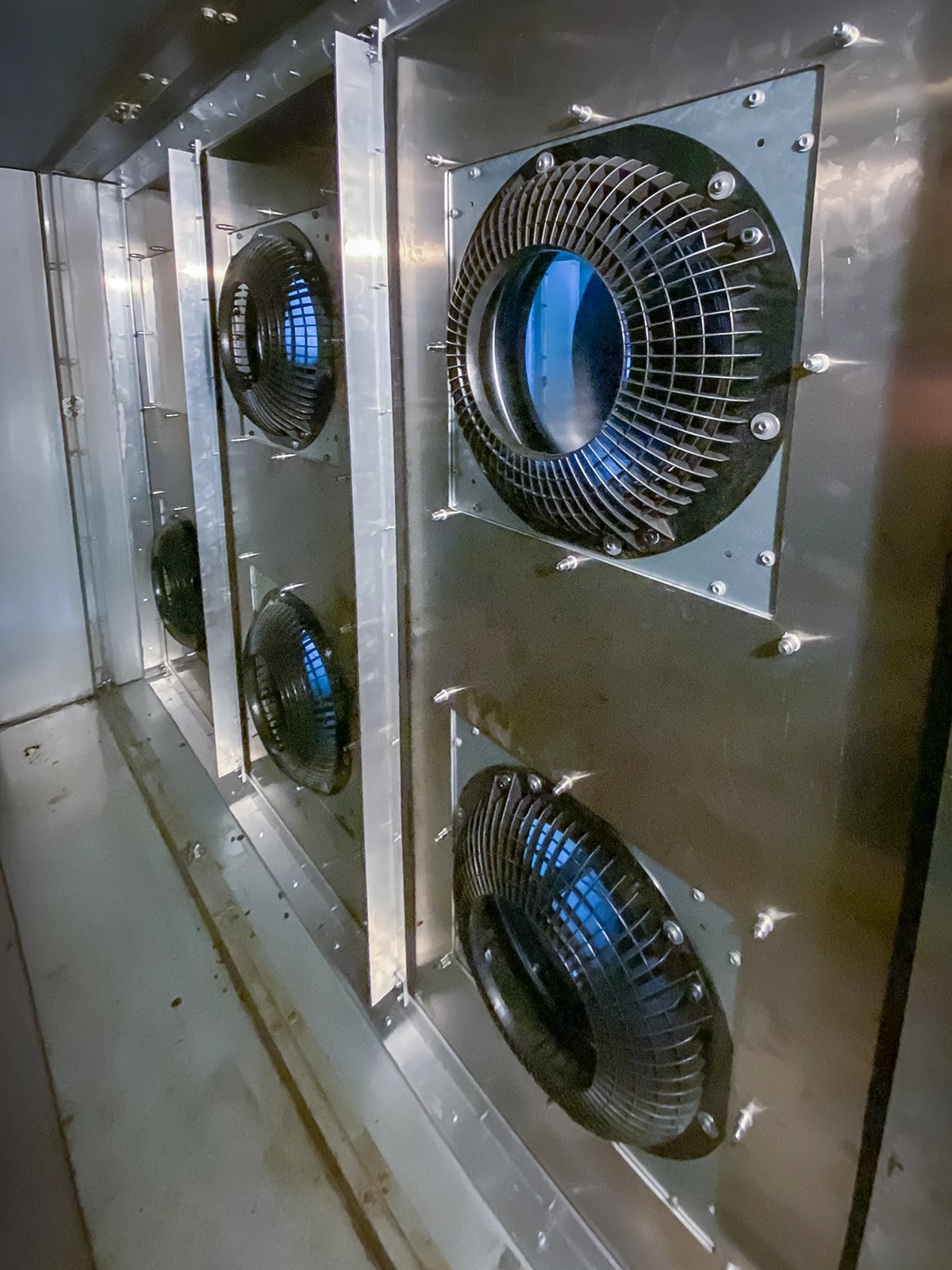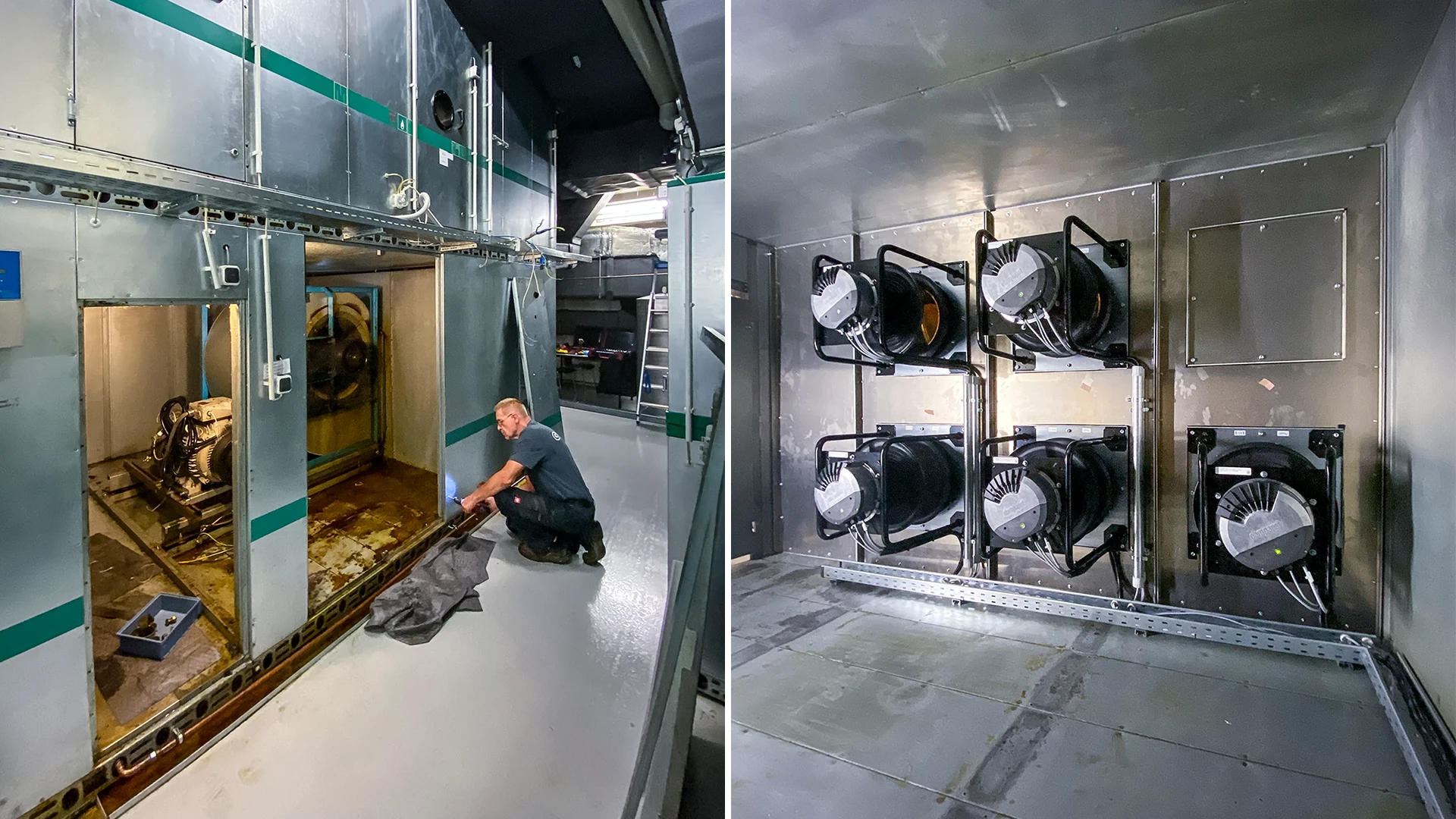Acquiring new customers is a tough job. However, it has been daily reality for Reiner Riedle and Raphael Mayer since they established their own company two years ago. AIRnorm GmbH, based in Engen im Hegau in southern Germany, specializes in ventilation and air conditioning, process air filtration, and retrofits for existing systems. Riedle and Mayer are enthusiastic about what they do and, with their company, have fulfilled their dream of promoting innovative and efficient ventilation and air conditioning technologies.
Alongside the patented two-stage adiabatic cooling process that is their favorite technology, retrofitting existing systems is an important part of the company’s portfolio. That is what Reiner Riedle was pitching to a well-known component manufacturer near Tuttlingen in October 2023. “Our contact there was concerned about three areas,” says Riedle of that meeting. “Cooling the production building, aerosols – and thus air quality – and a general assessment of the system.”
This was no problem for all-rounder Riedle. He reviewed the entire ventilation system in Hall 3, one of the customer’s five production buildings. Analysis of the data showed that a retrofit would yield energy savings of around 30 percent. The customer was interested because Riedle’s analysis and calculation revealed that the necessary investment would be amortized in less than four years. After speaking with the company’s management, a more detailed presentation of the retrofit project was requested.
System availability has priority
Riedle and Mayer proposed replacing the existing IE4 motors (International Energy Efficiency Class 4), each of which powered a centrifugal fan in the exhaust and air intake housing via a V-belt, with FanGrids consisting of five EC fans from ebm-papst. The backward curved RadiPac centrifugal fans are mounted in specially produced aluminum frames. These assemblies, known as FanGrids, are usually produced in such a way that more fans can be added quickly if required. In addition to the calculated energy savings, Riedle and Mayer highlighted the redundancy provided by several fans compared with just one single fan.
“If there is a problem with the fan’s impeller or housing, replacement parts are not quickly available. Depending on the year of construction, their supply takes three to four weeks at least. This means losing the entire output if there is one defective fan in the system,” says Riedle, explaining the disadvantage. “In a FanGrid, this lost output is simply made up by the other four fans and the ventilation system can continue operating as required.”


A possible outage of the ventilation system? This triggered alarm bells for the customer. The exhaust air from the machine tools in Hall 2 is directly connected to the ventilation system. Failure of this system would therefore result in a production stoppage because the oil aerosols produced by the machine tools could no longer be extracted and the building would be “flooded” with oil mist within just a short time. There was an urgent need for action. The customer decided to defer upgrading the ventilation system in Hall 3 and commission the Hall 2 retrofit from AIRnorm.
Three-and-a-half days for more safety
The retrofit was carried out during the summer vacation. “Since the customer was closing for a week anyway, it was possible to shut down the system,” recounts Riedle. “Removing the old drive motor was a challenge,” explains Mayer. “It weighed 320 kilograms and had to be lowered safely from a height of two-and-a-half meters.” The customer provided suitable lifting vehicles for this purpose.
„We prepared the system design, discussed it with Breuell & Hilgenfeldt and then had the whole thing verified by ebm-papst’s FanScout design program.“
Reiner Riedle, General Manager AIRnorm GmbH
In planning the project, Reiner Riedle and Raphael Mayer were supported by Breuell & Hilgenfeldt, the ebm-papst sales partner for retrofits. “This collaboration was a real success,” enthuses Riedle. “I have rarely experienced the level of cooperation we received from Dieter Hildebrandt.” And Raphael Mayer adds: “We prepared the system design, discussed it with Mr. Hildebrandt, and then had the whole thing verified by ebm-papst’s FanScout design program. We then set about choosing the fans.” The perfect solution was the RadiPac C, an EC centrifugal fan characterized by high efficiency, compact design, and plug & play capability for use in FanGrids.
Hand in hand for the perfect operation
In order to install the RadiPac, the AIRnorm specialists had the necessary aluminum brackets manufactured. One reserve space in each of the FanGrids means an additional fan can be installed quickly and easily if required. As the customer has only one access point to the fan chamber, Riedle and Mayer planned a removable segment that also gives access to the fan from the intake side. “This makes it much easier to perform maintenance work such as cleaning the heat exchanger register,” explains Riedle.
30 %
energy savings
5
new RadiPac EC fans
54,000 kWh
lower power consumption
In addition to the two FanGrids for air supply and exhaust air, the project scope included two control cabinets with MDC (MODBUS Display & Control) from Breuell & Hilgenfeldt. The MDC is a simple closed-loop system for controlling the operating parameters. It also allows the optional integration of the operating data into a building control system via a BUS system. This type of autonomous control has the additional advantage that it is not necessary to intervene in the existing system’s often outdated control concept. “Standardized cable outlets are used in the control cabinet,” explains Mayer. “However, the customer had thicker shielded cables because variable frequency drives were previously in use. That was no problem for Breuell & Hilgenfeldt. They supplied the control cabinets with larger cable bushings.”
The customer was very satisfied with the upgrade process. Thanks to the excellent collaboration between AIRnorm and Dieter Hildebrandt at Breuell & Hilgenfeldt, the retrofit – including commissioning – was completed within three-and-a-half days. Subsequent measurements have confirmed the anticipated energy savings of 30 percent. “That’s around 54,000 kilowatt hours per year. This is impressive and enabled the retrofit project to qualify for a subsidy from the Federal Office for Economic Affairs and Export Control (BAFA) – which was the icing on the cake,” summarizes Riedle with satisfaction.


Leave a comment